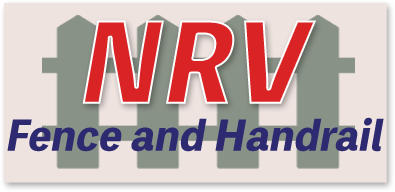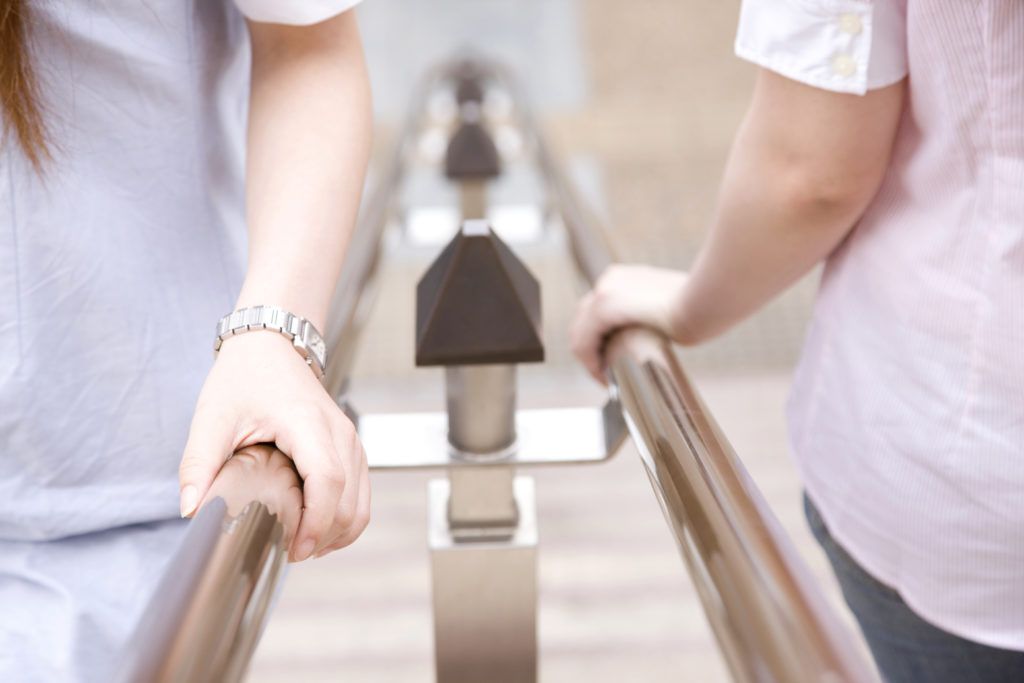NRV Fence & Handrail, LLC Knows All There Is to Know About Handrails
You can find different types of handrails and reasons to install them, so that’s our blog topic for this quarter. Generally speaking, handrails serve two functions. One reason to have a handrail is for aesthetic appeal. The more significant function of a handrail is to provide stability or support. In general, handrail benefits include:
- Give people a sense of safety
- Are handicap accessible
- Provide safety and aesthetics along staircases
- Give people added protection in the bathroom
- Offer extra stability as part of a walkway
How Do Handrails Provide Stability and Support?
Most people get a sense of safety and security using handrails along staircases and as part of a walkway. This is especially true if pedestrians have difficulty with balance. Disabled and elderly people benefit from handrails when using bathroom and restrooms. Most municipalities require handrails in homes of disabled residents to make features more accessible.
Having Handrails Can Give Visitors and Loved Ones a Sense of Safety
Handrails benefit visitors and loved ones by giving anybody who struggles with balance a sense of safety. Handrails also provide a sense of safety for anyone during potentially slippery conditions. Having a handrail outside of the shower, can help prevent a slip and fall. Installing a handrail as part of a walkway serves to protect everyone from falling because of rain or snow. Adding handrails along staircases helps children and adults maintain a high degree of mobility without the fear of falling.
Handrails Promote Accessibility and Help Persons With Disabilities
In 1991, the Americans with Disabilities Act created various standards to which structures had to comply for handicap accessibility. To be handicap accessible especially means including handrails in the bathroom, as part of a walkway, and along staircases. The ADA has very specific guidelines, which they revised in 2010, regarding handicap-accessible handrails.
According to the 2010 compliance standards, handrail gripping surfaces must have rounded edges. Handrail gripping surfaces must meet minimal diameter and perimeter dimensions as well. The ADA also requires handrail gripping surfaces be continuous, and uninterrupted by newel posts, other construction elements, or obstructions. You can read more detailed information about ADA handrail requirements on the ADA-compliance information website.
Install a Handrail Along Staircases to Provide Safety and Aesthetics
Handrails are important components to place along staircases. They can blend in via a subtle design or serve as an accent that stands out. Using handrails can prevent falls that could cause health and safety incidents. Older houses often include handrails along staircases. If you want to add handrails along staircases that don’t already have them, they come in various styles, including:
Wood Handrails
Wooden handrails are simple, yet also strong and sturdy. Wood handrails along staircases come in assorted wood species. Popular shapes for wood handrails include round, oval, fusion, and elements.
Metal Handrails
Metal handrails along staircases are highly durable and also strong. You can find them in aluminum, steel, stainless steel, brass, and wrought iron. The variety of shapes and styles include flat backed, volute, and piped.
Glass Handrails
Glass handrails along staircases open up a space and increases visibility. They also require minimal maintenance. Glass handrails come in either annealed, heat-strengthened, or tempered glass.
Vinyl Handrails
Vinyl handrails are fire resistant and so easy to clean. As a material, vinyl is affordable and also cost-efficient. Vinyl handrails along staircases can be styled into spheres or very curved shapes.
Install a Handrail in the Bathroom to Give People Added Protection
Handrails in the bathroom serve a slightly different purpose than along staircases. They certainly provide stability like those along staircases. However, handrails in the bathroom double as grab bars. People getting up from the toilet use handrails in the bathroom as added strength support. When they get out of the shower, handrails prevent a fall. Handrails in the bathroom serve the needs of elderly and disabled people who often have balance control problems.
Add a Handrail as Part of a Walkway to Offer Extra Stability
Handrails as part of a walkway also exist to provide pedestrians stability. For people in wheelchairs, handrails serve to assist their maneuvering along the walkway. Generally, handrails as part of a walkway are horizontal. Manufacturers construct them with high visibility. Styles of handrails include:
Horizontal Handrails
Horizontal handrails guide pedestrians. They also separate walkways from automotive accesses. If the walkway is slippery or hazardous because of inclement weather, they also provide additional safety and support.
High-Visibility Handrails
Sometimes handrails as part of walkways usually have high-visibility. So these handrails have bright colors, usually yellow or orange. In these cases, handrails as part of walkways provide more safety around ramps, loading docks, and similar unsafe zones.
Call NRV Fence & Handrail, LLC, at (540) 392-8060 for more information on residential and commercial fences and also handrails. Our team would be happy to talk more about the reasons to install different types of handrails.

